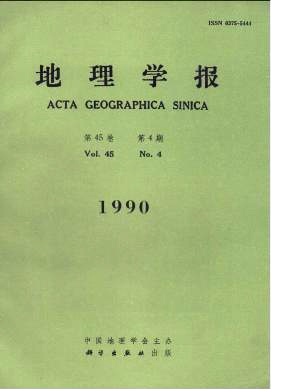Lin Chengkun
The Changjiang Estuary in an estuary characterized by immense runoff and strong tide. Its average discharge is 29 400m3/s, in time of flood-tide, it can be as great as about 5.3 X lO9m3. The average tidal range at the river mouth is 2.66 m. The amount of sediment is 4.605 X 108m3/a. The dynamic interaction of these two strong forces leads to from the braided pattern in the Changjiang Estuary. It is divied into the South and the North Branches by the Chongm-ing Island. The South branch is likewise subdivided into two waterways, the South Waterway and the North Waterway by the Changxing and the Hengsha Island, and furthermore the Smr th Channel and the North,Channel by the Jiuduansha sandbars. Now we regard the braided channels as the North Waterway and the North and the South Channel. At their estuaries, there exist the mouth bars and the natural water depth of them are limited to about一5.8m of the base level of the Wuson (all those following are of this base level). At the present, the North Chan-nel is sea-entering channel of the Shanghai port and Harbours of the Changjiang Delta. The North Channel dredge to一7m, material dredging from the channel amounts to 1.8 X 107m3/a. A 10 000 ton carrier may pass throuth this channel with the tide. The fluvial processes of the North and the South waterway appear primarily to be thriving and degenerating alternatively. A study of historical records and topographic maps of the Changjiang Estuary reveals that on an average the waterway changed its position with a frequence of about once in twenty years. The Hangzhou Wan is a typical funnel-shaped estuary with strong tide from the mouth to the apex. The reduction of width is 80km, while the increase of tidal ramge is twice as much. The average tidal range is 5.45m, the maximum tidal range is 8.93 m. The annual average dis-charge of Qiantangjiang is only 921 m3/s, while the average discharge of flood tide may reach 190 OOOm3/s. The formation of a funnelshaped estuary of a deltaic estuary is due to the less qu-antity of sediment of the Hangzhou Wan with an average amount of merely 5.328 X 107 t/a, of which clay sediment takes up 76.2% of the total. The Hangzhou Wan is divided into the South and the North Branches by the Qiqu Archiplage. The average natural water depth is about一9.11 m, The less quantity of sediment and very fine particle are not liable to settle down and sa the waterways are quite stable. The change of channel is rather slow. At the present, these two wZterways are not developed as yet. The Shanghai Port, the biggest port of China, has at present, not enough passing capacity. Inorder to solve this difficulty, some new ports must be built. According to sedimentation, flu-vial processes and water depth of sea-entering channel and port-sites, the author suggests the best port-sites at Jinshzui and Qiyikou which are selected from the Hangzhou Bay and the Ch-angjiang Estuary. For the former, the berth will be limited from 35 000 to 50 000 ton-class and for the latter from 10 000 to 20 000 ton-class. The passing capacity of the main channel at the Changjiang Estuary is affected by the dr- edging difficulty. To solve this problem, in order to make full use of the main entering citan-nel, an auxilliary channel of South Branch of the Changjiang Estuary and a sea-entering eh-annel at the Hangzhou Wan must be opened up at the same time in the nest decade.
